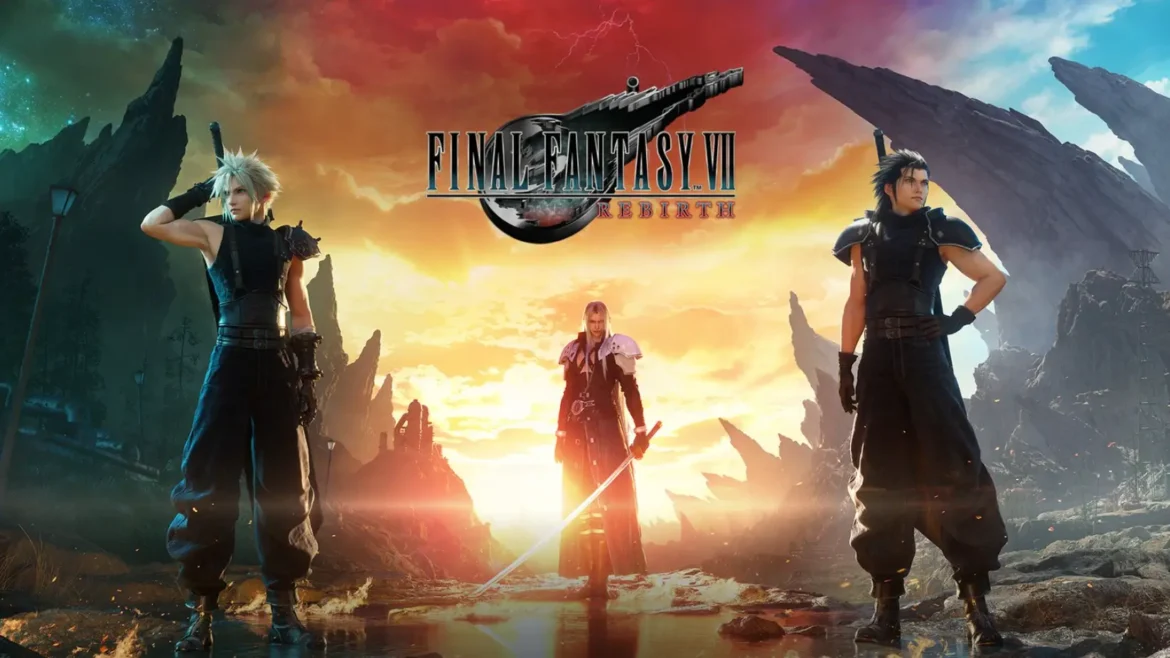Release Date : February 29, 2024
Developer(s) : Square Enix Creative Business Unit 1
Publisher(s) : Square Enix
Platforms : PS5, PC
It took almost four years to find out if Final Fantasy VII Rebirth would be the perfect successor to Final Fantasy VII Remake. In an attempt to convince us, we were able to test it twice: the first time, five months ago, and again during a more generous and free session in the Grasslands region a few weeks ago.
During the first visit, in September, it was mainly a question of reconnecting with one of Square Enix’s major projects, then learning about a handful of new mechanics, particularly synchronized actions and skills, and familiarizing ourselves with its new structure, now based on semi-open areas. The second session, last January, confirmed our initial impressions and revealed new mechanics we’d never seen before.
With only a few hours spent, it was easy to understand why the project’s executives, especially the producer Yoshinori Kitase and director Naoki Hamaguchi, were so confident about this sequel. Even though, we still left with a few reservations.
Of course, the time we spent playing did not allow us to develop a definitive judgment on the game’s structure and the modifications made, mainly the introduction of semi-open areas with several side quests. But with over 75 hours of gameplay on Final Fantasy VII Rebirth (at the time of writing), it’s a different story!
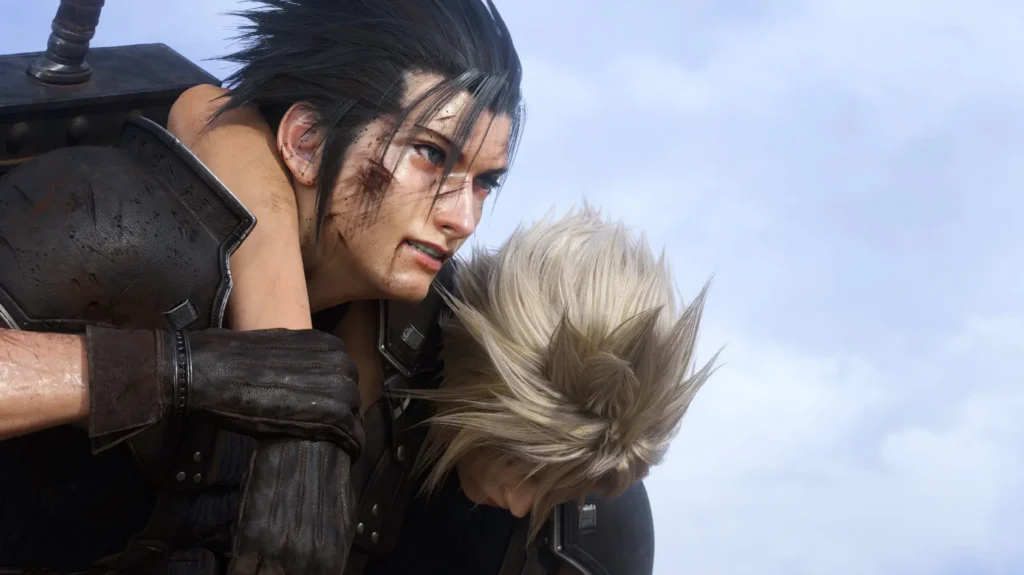
So, were the developers right to be so confident about this sequel? Does it correct Final Fantasy 7 Remake’s defects without adding to them through structural changes? Does it do justice to the original game and manage to stand on its own merits, even against such a legacy? It’s time to share our review and explain, based on our experience, whether Final Fantasy VII Rebirth is indeed the flagship episode of this remake trilogy, or even of the saga!
Table of Contents
A Familiar Dance With New Steps
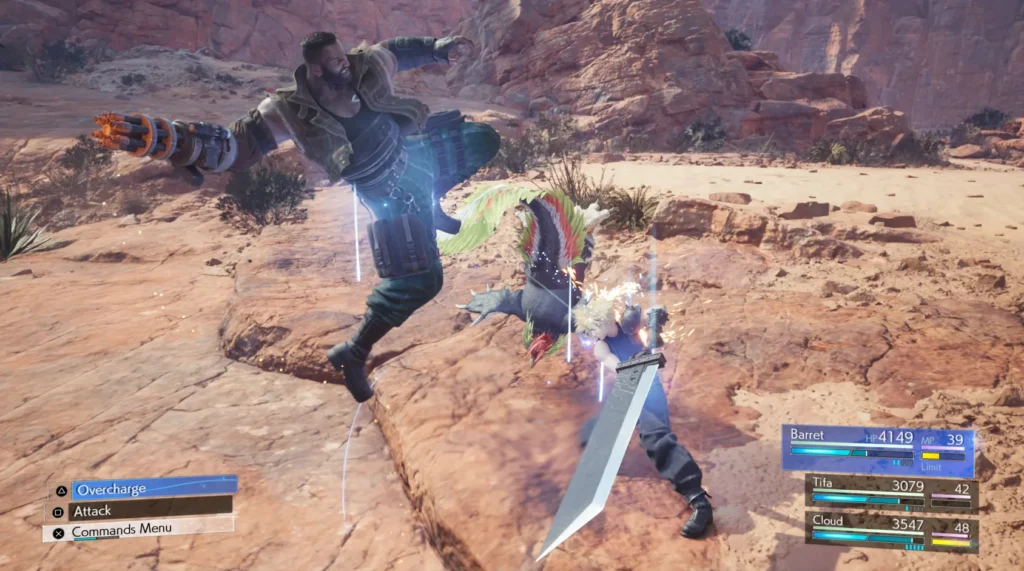
Let’s get straight to the point, and start with the game’s most important aspect: the gameplay! Here, Cloud is no longer standing on a station platform, a stone’s throw from Mako Reactor 1, but is in the company of Sephiroth, both sitting in a van on their way to Nibelheim. This frame, taken from a memory, is only temporary, but it serves as an introduction to the basics of the combat system and Rebirth’s new features.
In our recent preview, we mentioned the addition of a perfect parry and a detection gauge. However, these two aspects are just a fraction of the overhaul of the combat system. While Final Fantasy VII Remake offered some of the most addictive gameplay in the series, Rebirth attempts to improve it more, and succeeds in doing so, to the point where the inclusion of these improvements has managed to transform our relationship with the combat system, giving us the impression that we’ve only mastered the surface, despite the return of our usual reflexes.
This feeling grew even more throughout the adventure, thanks to a cast almost twice as generous as Final Fantasy VII Remake. From this point of view, the gameplay is deeper and leaves more room for experimentation in team combinations. In the game, you can build up a maximum of three predefined teams, which you can change immediately outside combat. This change is smooth and simple, because outside of the segments where the story requires characters (solo, duo, or trio), all your team members follow the leader, i.e. Cloud.
Whenever there’s a change of composition, the two characters you control move closer to him, creating a smooth, almost natural transition. Apart from this small restriction and this common denominator, you have the freedom, using the six other members, to form groups according to the characteristics of each one, a point that has been refined in comparison with the Remake.
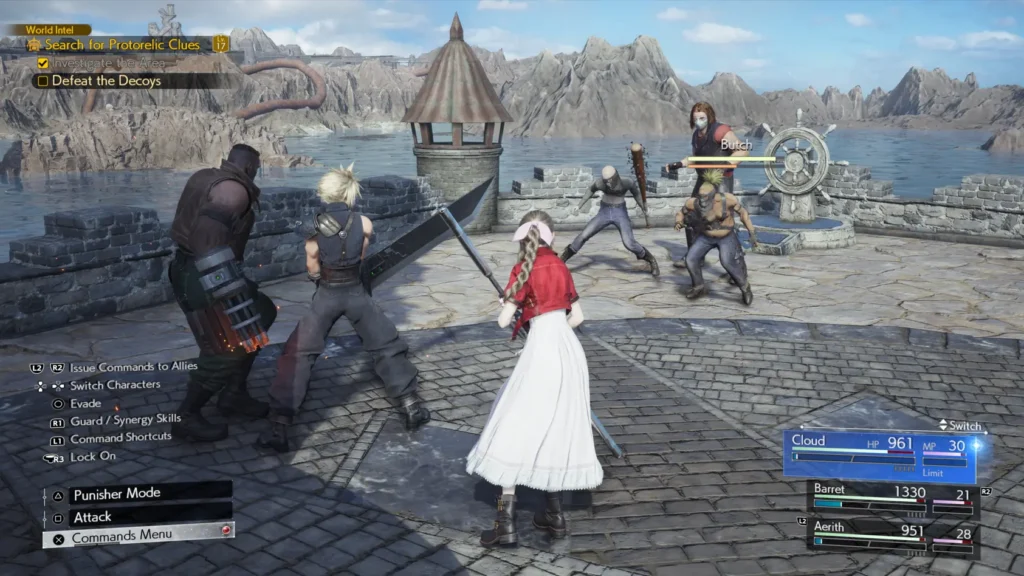
As an example, we can mention the fact that Tifa’s move set expands and offers a little more verticality to pin enemies in the air, and Barret becomes an even more powerful ally when it comes to shocking enemies, Aerith’s poor mobility is compensated for by the ability to teleport, Red XIII’s Vengeance mode relies primarily on a guard and riposte system, and can be used both for offense and defense, Yuffie’s ninja techniques give him two additional postures (hand-to-hand or ranged), and Cait Sith’s unpredictability proves that he can turn things around, as well as being excellent support. For this matter, Rebirth takes Remake one step further, while introducing new weapon-related skills… and a Codex for each hero!
Here, it’s no longer just the weapon “spheres” that can be developed, as each hero has his own Codex. As you level up, you’re awarded five skill points, which must be spent in this skill tree, where branches increase tenfold according to team level. As for weapons, they’re no longer upgraded the same way: the AP acquired for weapons increases their level, unlocking new abilities that can be attached to them, as well as additional slots and increases in basic attributes. So, in addition to varying your character’s approach using the codex, you can also shape your own gameplay by setting weapon settings.
The combat system core remains the same, but it is revealed in a new light, proving that Rebirth is not satisfied with simply implementing a formula that has already been well received. And, as if that weren’t enough, there’s the addition of elemental skills (very useful, to be acquired via the codex), new materials (new, combined, updated compared to Remake), and above all, affinities.
Rebirth: A Deeper, More Rewarding Experience Than Remake

Playing Final Fantasy VII Remake, reveals that this trilogy’s initial chapter was just an introduction, a pretext for laying the foundations for this Rebirth, particularly in terms of teamwork and character bonding. Freed from the restricted environments of the Remake, Final Fantasy VII Rebirth’s heroes are more open, more fulfilled, and reveal more of themselves to others, and this is expressed in an affinity system that is deeply rooted in the gameplay.
The journey that the members of Avalanche embark upon will bring them closer together. Within the game, you sometimes have dialogue choices affecting the relationship between Cloud and his teammates, quests that are sometimes carried out with a predefined character and, of course, accessible action commands to develop your team level and by extension, the codex branches. There are two types of command: synchronized actions and synchronized skills.
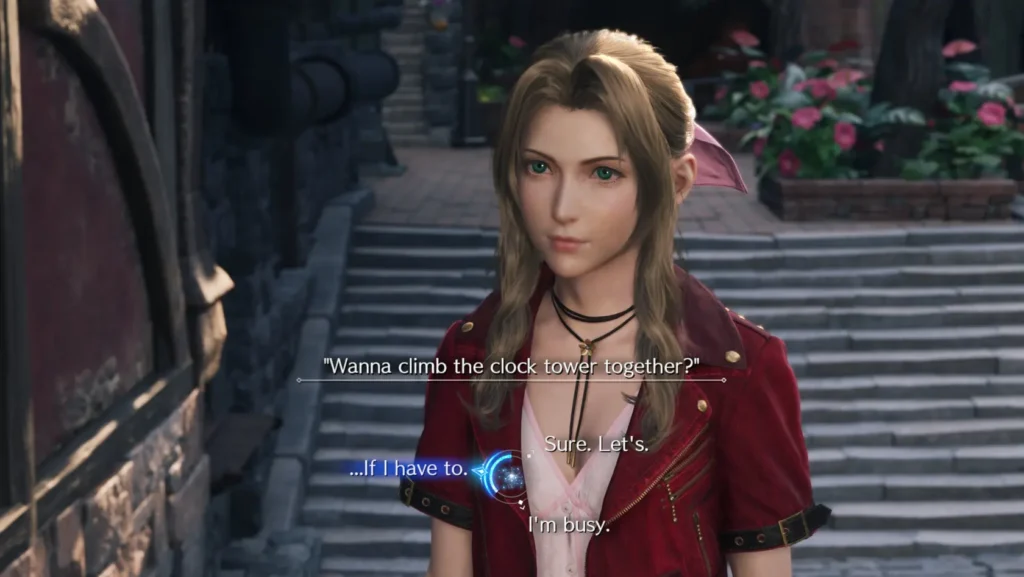
In practical terms, this new gameplay direction is one of the major strengths of the updated gameplay system inherited from Final Fantasy VII Remake. And what makes it even more relevant is that, within the combat system itself, it transcribes the development of the plot and the events that will link this gallery of characters who barely know each other.
During battles, the three deployed heroes can help each other in two ways. With synchronized actions, the player can adapt to different situations without consuming ATB. In the guard position, the character you control can call on an ally in many ways, provided he or she has previously unlocked the action in the codex. For example, Red XIII can perform a dodge while Barret can propel him towards the enemy to counter-attack, Aerith can protect herself from damage by having a bodyguard stand between her and the enemy, Cloud can send magical projectiles created by one of his allies to do damage from a distance, or channel energy with the support of his teammate to unleash a more powerful attack than the average.

However, synchronized skills will require more effort to be used in combat, especially in extended and boss battles. Thanks to this strategy, the gameplay pushes the limits of action and is even more dynamic and frantic than FF7 Remake. To use them, you’ll need to top up a special ATB gauge that fills up as you use your spells and techniques: for every basic segment of ATB used (one spell, one skill, one item), the synchronized skill gauge gains one segment (up to five).
Generally speaking, you’ll need three or four segments (per character) to combine them for an often devastating action with multiple bonuses (gain of an ATB segment, reducing MP to zero for a while, increase in Transcendence level). During the most challenging confrontations, this cooperation can turn everything on its head and, at the same time, increase the staging’s overall scale tenfold. Rebirth’s gameplay is even more spectacular than the Remake.
Beyond the battles, the affinity between Cloud and the other characters is one of the occasions to (re)discover the Gold Saucer date. As promised by the developers of this sequel, this is an element that has been given significant rework (as evidenced by the musical that takes place before this famous scene) and results in some fresh moments, proving once again that this is not just a simple remake of the original game.
Regardless, Final Fantasy VII Rebirth’s affinity system keeps a close eye on one of the saga’s great strengths: its cast and the journey they embark upon, leading to bonding, fighting, and other funny, tragic, or touching moments. We’ll talk more about this in the story section below, but the way the characters are detailed and highlighted, through the combat system, contributes to making Final Fantasy VII Rebirth a must-play.
A World Worth Exploring
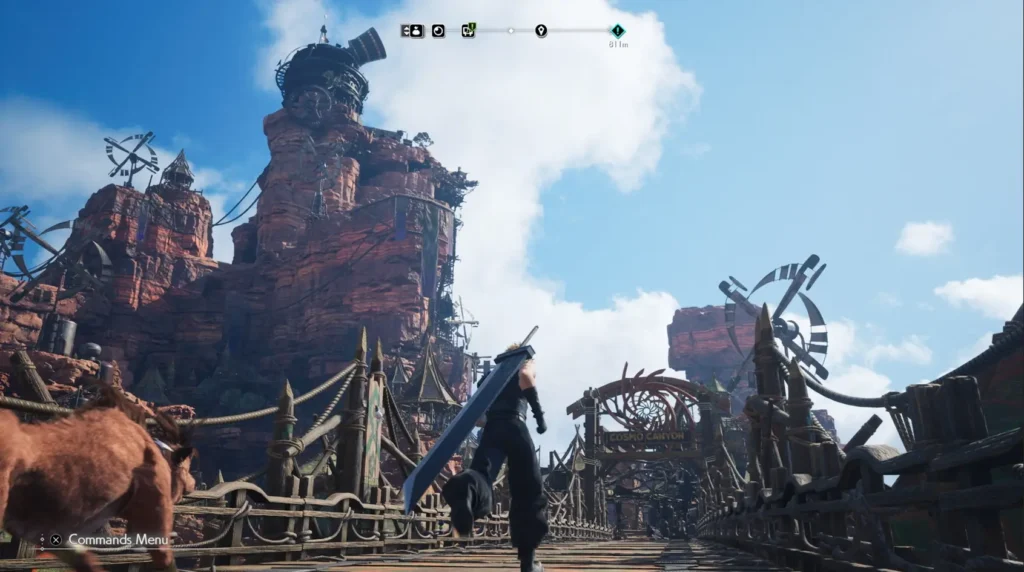
Final Fantasy VII Rebirth was highly anticipated for many reasons. For instance, we’ve just mentioned the gameplay system, and with good reason, since players are expecting to rediscover the gameplay they once enjoyed, but above all to experience and feel its evolutions, a key factor in the progression between the two titles. When it comes to the game’s formula, the principle is the same, if not more extreme.
Final Fantasy VII Remake’s setting and plot have sometimes been criticized for their linearity, especially since the denser, more back-and-forth passages have contributed to this criticism. For Rebirth, this new adventure is both an opportunity and a challenge for Creative Business Unit I to overcome. As the developers told us, Rebirth was the perfect opportunity to put the Final Fantasy saga formula to the test, the chance to create an experience that maintains a balance between narrative corridors and semi-open-world exploration zones.
As seen in the State of Play preview at the beginning of February, Rebirth features six different regions (Grasslands, Junon, Corel, Gongaga, Cosmo Canyon, and Nibelheim) which can be explored as the plot unfolds, and returned to later to complete any unfinished tasks. Having spent more than 75 hours exploring these lands for the purposes of this review, Rebirth gave us the feeling that it had a better grasp of the pace, but not without occasionally getting its feet stuck in the carpet. Overall, the title does a better job of shifting between chapters that take us through a kind of dungeon and passages that dilute the narrative through a freer approach.
It’s often said that the hallmark of great open-world games, whether on a large or small scale, is that they don’t necessarily need to wave a reward in your face to make you want to plunge in and devote many hours to them. In this case, Final Fantasy VII Rebirth is just such a game, as the scenery, ambiance, and activities to be accomplished make us want to explore in order to complete the various tasks, or to wander with no particular goal in mind until we come across something that grabs our attention.
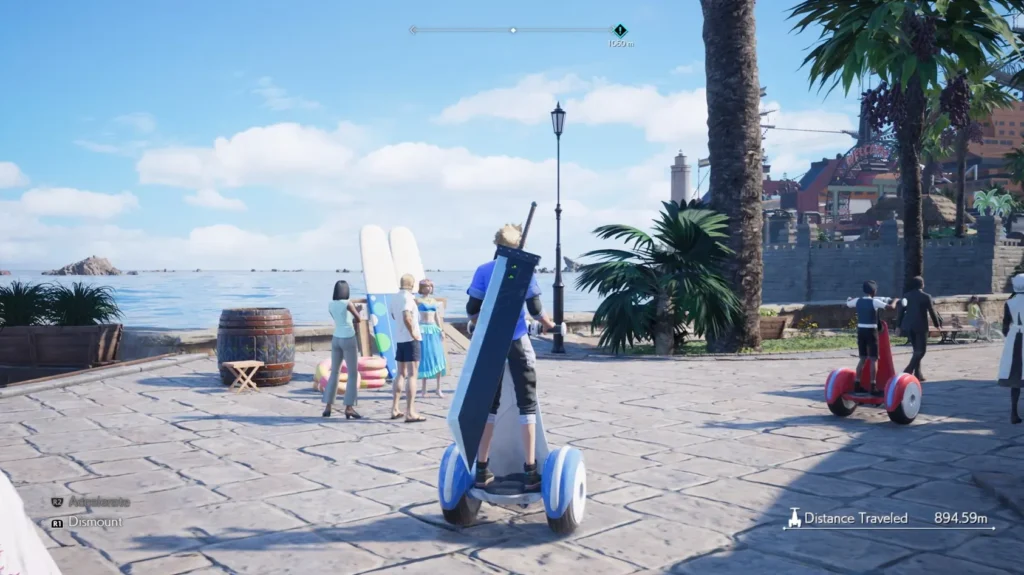
Indeed, there are times when the game tends to take us a bit much by the hand through visual clues (yellow marks on walls, luminous rocks leading us to summon altars, Chocobo chicks guiding us to teleportation points to be activated, birds to be followed to life wells, …), and when it reuses a slightly old-fashioned structure based on transmission towers to be refueled, but that’s a minor detail. In these same zones, you don’t really need to restore power to a tower to unlock the activity concerned. They simply reveal the locations.
As a result, you can wander the countryside on your own, setting yourself a course and stumbling across one of the many exploration reports that allow you to complete the regional analysis, and this is surely the best way to explore the Final Fantasy VII universe, especially if you want to be amazed by the amount of work that has been invested in the (re)creation of a world briefly pictured in the original opus.
Anyway, despite the redundancy of the content, which remains the same from one zone to the next ( except for the quests related to the Protorelics, which hide multiple sub-stories) and a few side-quests that aren’t necessarily groundbreaking, you’ll enjoy wandering through each zone to complete the Hunting Grounds, analyze the Life Wells, search the excavation sites, engage in the stories and side-quests, unearth the Mog houses or activate the Summon Crystals.
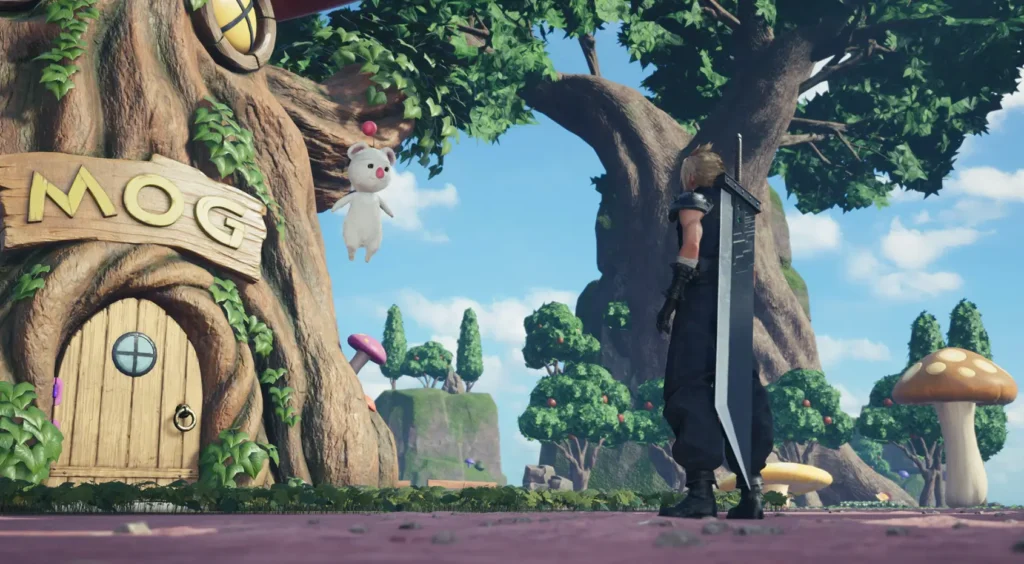
On this subject, Rebirth overcomes one of the criticisms of the original game, providing much more context and taking more care with the way the invocations (the Crystals) are introduced in a cyberpunk setting that is less fantastic than what the series was able to offer in episodes before the seventh installment.
Here, each summon has a story linked to one of the regions, and this helps to reinforce the Final Fantasy VII lore. Rebirth also draws heavily on the many formats that revolve around the game (novels, films, spin-off games). To seal the success of a more open and varied form in terms of content, Rebirth also offers the chance to compete against a group of players in Queen’s Blood, the title’s famous new mini-game. The principle itself is very simple, and the game becomes more complex with the addition of cards with special abilities, making it even more exciting to play. For our part, we were pleasantly surprised by this side content, even more so when we discovered that it hid a sub-plot that encourages full dedication.
Nostalgia, Surprises, and Deep Emotions
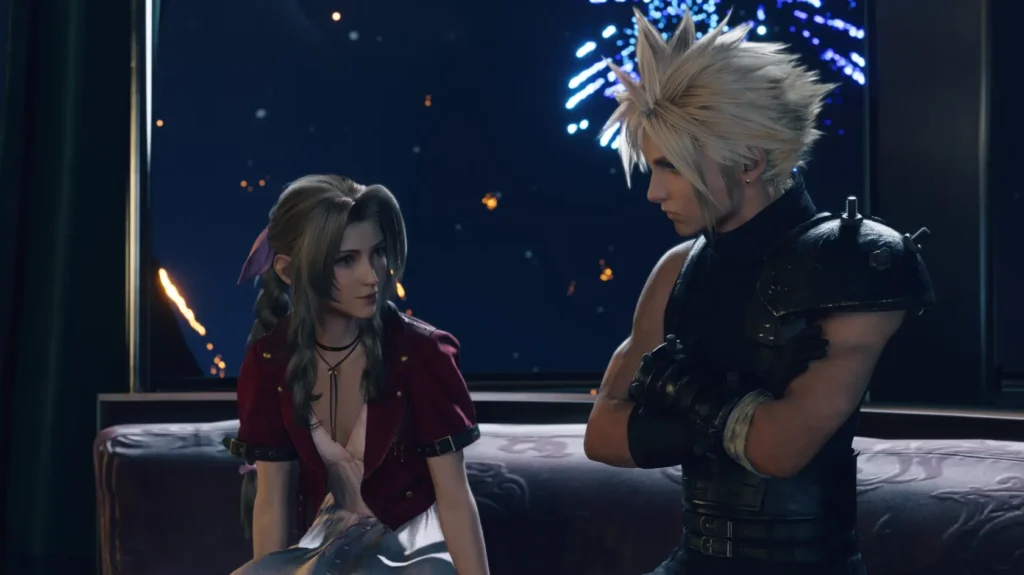
Final Fantasy VII Rebirth builds on the success of Final Fantasy VII Remake by paying tribute to the original plot while also introducing its own storylines. Throughout the game’s different chapters, you can enjoy rediscovering the journey of Cloud and his friends, while taking part in new scenarios introduced by the developers to reinforce the original storyline in the Remake. The Rebirth experience is even more emotional than the original.
In one way or another, we find ourselves smiling at certain moments, laughing out loud at others that are completely in the spirit of the Remake (and perhaps even more so!), thrilled by the original and new events, amazed by the beauty and ambiance of the Gold Saucer and the scenery, or truly surprised by the direction the writers have taken! As you can see, Final Fantasy VII Rebirth is a vibrant game that carefully highlights everything proposed minimally in the 1997 title.
Despite knowing all the details of the original game, we still experience Final Fantasy VII Rebirth with excitement, fuelled by the doubt that we’ve suddenly witnessed a surprise from the developers. All players are more or less aware of what lies ahead at the end of the game, and yet, we find ourselves moving forward with exhilaration, as if everything had disappeared and was now being written in real-time. To achieve this, Rebirth has focused on a staging that highlights the key moments of the original work, giving them a more emotional, more epic, and more surprising dimension.
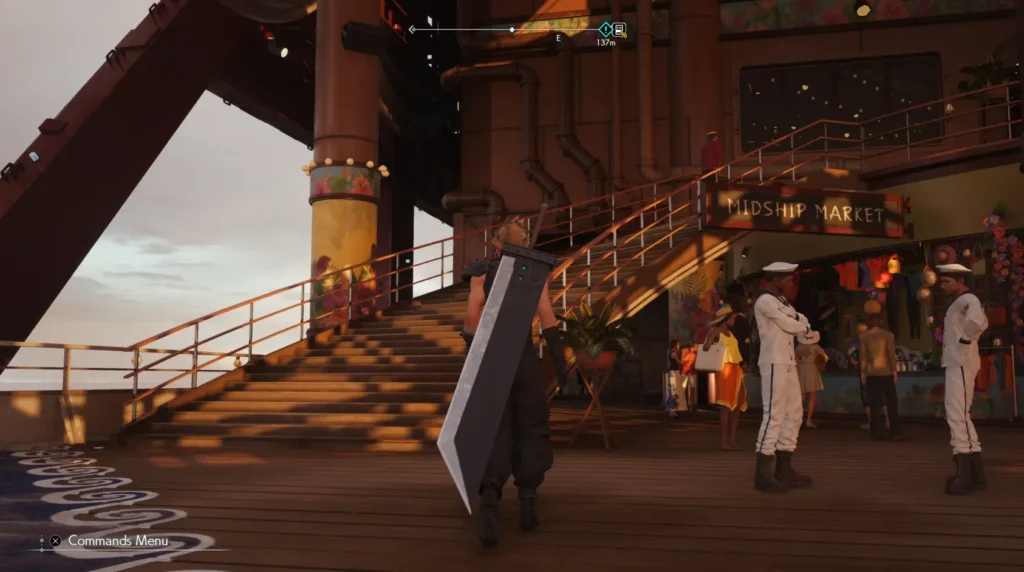
While it’s a pleasure to reach the key moments of the story, we’re also delighted by the smallest details that complete the long journey of this second part. Rebirth’s adventure is so engaging because it takes place in the company of a group that lives life to the full, and is totally in line with Final Fantasy codes. In this way, we rediscover the real essence of the saga, a component whose absence was harmful to the previous installments. Here, just by following a dog on a side quest, multiple interactions between the members of the group are created: it’s a small thing, but it has a big effect.
This makes playing the game’s side quests more enjoyable, and helps make it an engaging and entertaining experience that you’ll happily repeat again and again, so much so that it can be extremely addictive. Thanks to its depth, variety, and pace, there was never a moment when we felt that the journey was starting to get beyond our patience, despite the 75 hours that we spent playing it. Rebirth has definitely established itself as an exciting experience that we refuse to leave behind: it’s impossible not to consider this the signature of a great game!
Conclusion
The dream ignited by Final Fantasy VII Remake in 2020 reaches new heights with Rebirth. This sequel refines the gameplay to a remarkable degree, boasting a smoother rhythm despite minor stumbles. The artistic direction evokes a range of emotions, the story honors the original while forging a new path, captivating newcomers and fans alike. FF VII Rebirth might be the perfect formula for storytelling in the Final Fantasy series, allowing players to explore at their own pace. This is a landmark entry, brimming with potential and setting the stage for a truly exhilarating future. With its exceptional qualities, Final Fantasy VII Rebirth might be considered the best game in the saga, and it sets the stage for an epic future.
